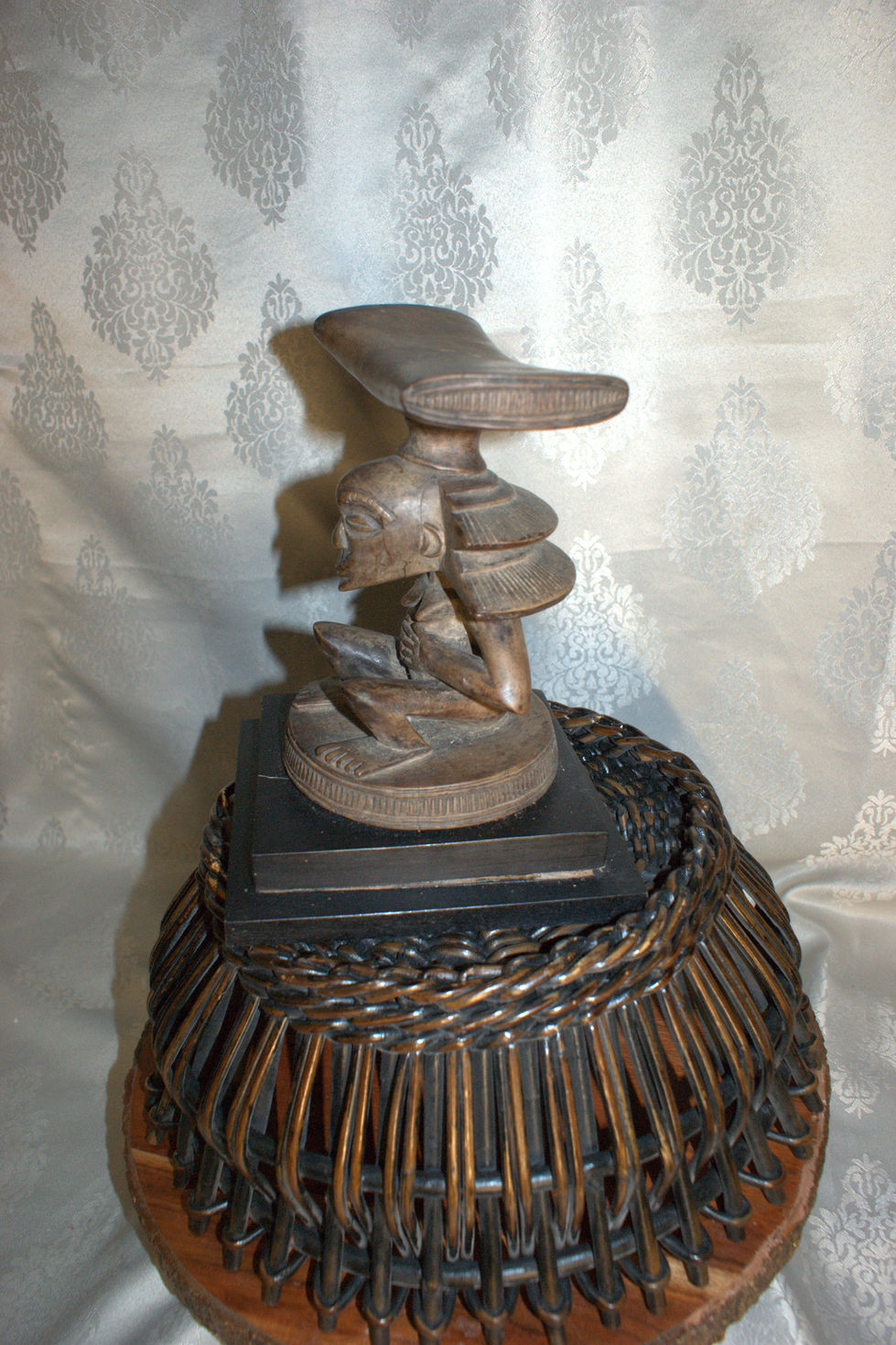W🌍RLD HISTORY
Create Your First Project
Start adding your projects to your portfolio. Click on "Manage Projects" to get started
Luba Shankadi Headrest
Name:
Luba Shankadi Headrest
History:
Origin: This type of headrest originates from the Shankadi subgroup of the Luba people, located in the southeastern region of the Democratic Republic of Congo.
Traditional Use: Headrests were essential personal objects in many African cultures, serving to support the neck and head during sleep, thus protecting elaborate hairstyles from being disturbed. For the Luba, they transcended mere utility and also held significant spiritual and symbolic meaning.
Association with Sleep and Dreams: Sleep was considered a time when the spirit could leave the body and interact with the spiritual realm. Headrests were believed to offer protection during this vulnerable state and could even facilitate communication with ancestors through dreams.
Status and Prestige: Elaborately carved headrests, like this one, were often indicators of status and prestige. The quality of the carving and the complexity of the figurative elements reflected the owner's importance within the community.
Cultural Significance:
Spiritual Protection: As mentioned, headrests were seen as protective objects during sleep, a liminal state between the living and the spiritual world.
Connection to Ancestors: The figurative elements often depicted on Luba headrests, particularly female figures, are frequently interpreted as representing ancestral spirits or powerful female figures within Luba cosmology. These figures could offer guidance and protection to the sleeper.
Embodiment of Beauty and Refinement: The intricate carving and polished surfaces of Luba headrests reflect the Luba aesthetic ideals of beauty and refinement, qualities highly valued in their society.
Personal Possession: A headrest was a deeply personal item, often accompanying an individual throughout their life and sometimes even placed in their tomb.
Symbolism and Design:
Caryatid Figure: The presence of a female figure (caryatid) supporting the horizontal rest is a common and significant motif in Luba art. This female figure is often interpreted as:
An Ancestral Figure: Representing a founding female ancestor or a powerful female spirit offering support and protection.
The "Woman Who Gives Birth to Kings": Referencing the important role of women in Luba royal lineage and the transmission of power.
An Embodiment of Ideal Beauty and Serenity: Reflecting Luba aesthetic ideals.
Elaborate Hairstyle: The intricately carved hairstyle on the figure is characteristic of Luba artistic representation and often denotes status and identity.
Scarification Patterns: The subtle markings on the figure's body likely represent traditional Luba scarification patterns, which held cultural meaning related to lineage, beauty, and social status.
Cup-like Base: The figure often sits or kneels on a base, which can be circular or rectangular and may also feature carved decorations.
Horizontal Rest: The smooth, curved horizontal element provided comfortable support for the neck.
Material: Typically carved from wood, the polished surface enhances its aesthetic appeal and suggests careful craftsmanship.
Symmetry and Balance: Luba art often emphasizes symmetry and balance, which can be seen in the composition of this headrest.



